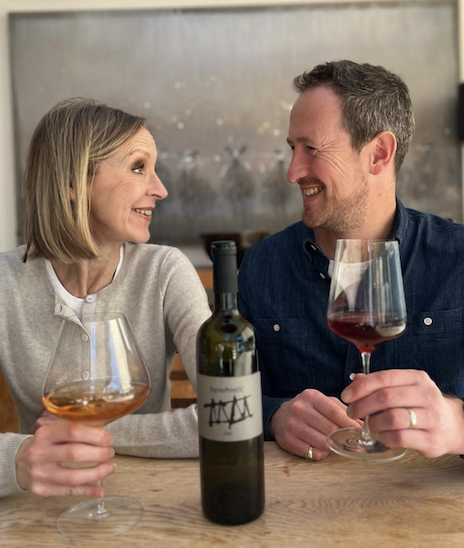The new appeal of orange wines
The other week Susie and Peter Barrie were kind enough to interview me for their excellent podcast, Wine Blast, the pithy subjection under discussion being the fascinating revival (or emergence) of orange wines. The podcast is split into two episodes: Orange Wine Part 1: The Resurrection and Orange Wine Part 2: Gimme Some Skin. Listen here:
With help from expert guests including journalist and author Simon Woolf, and seminal winemakers Mateja Gravner and Sasa Radikon, they explore the history, tradition and culture of orange winemaking, try to reach a clear definition of the style of the wines, and delve into its association with the natural wine movement.
As per my recent blog post on the subject, one can approach the orange wine phenomenon from various angles. The first is to look at the method behind the winemaking and the philosophy underpinning skin-contact wines. The second is to examine the subject from the point of view of colour. Orange is no more a monolithic colour than red is. The wines that we describe as orange encompass various shades – from pale gold through to dark amber. The colour (both the idea and the actuality) engenders strong associations. If we are novices, this orange hue may be disconcerting in respect of our expectations of what a wine should look and taste like. We have tended to parcel wine into boxes: this is white, that is red or rose, but orange has become the legitimate fourth colour and deserves to be mentioned in the same breath.
Orange is not just an exterior colour. The aromas and the phenolic sensations of these skin-contact wines are unique and captivating. And as we experience the new textures and flavours in these wines, we are encouraged to seek a new terminology to describe the sensations and emotions evoked.
Amber/orange wines with their textural subtlety and complexity seem to tap into deeper receptive zones. The best of these wines, when we feel them in our mouth, give us the impression that we are touching them with many other parts of our body at the same time. With these wines, however, you must start with their evocative colour, which may resonate on so many levels. Orange, for example, combines the energy of red and the happiness of yellow. It is associated with joy, sunshine and heat. It also represents enthusiasm, fascination, happiness, creativity, determination, attraction, success, encouragement, and stimulation. Yes, orange is a feeling.
Wine-tasting notes are based on clear distinctions and precise evaluative terminology – of oppositions between white versus red, the clean skin versus maceration, and describing the relative body of the wine in question. You can call a wine unfiltered or cloudy, but that doesn’t come close to describing the quality of its colour. When we have a wine that has a colour that seems to shift according to the light, that possesses a special energy of its own, aromatics that are more than primary, and a texture that is multi-rhythmic and multi-layered, then this is a wine that by its very nature has the wherewithal to bathe our senses in ambient pleasure and evoke a form of ASMR, a visceral tactile experience, that term coined by Jennifer Allen, standing for Autonomous Sensory Meridian Response.
If amber wines were music, they would be as live performances, fuzzy, rough-edged and unpredictable. Their tactility means that you can touch them at the same time as they touch you. And like the best live music, they may give one a peculiar frisson.
At Les Caves, we have been championing the beauty of skin-contact wine for many years.
Returning the wine to the skins is like keeping the wine on its lees; reconnecting with the natural building blocks of terroir. It is to do with extracting essential flavours and matter, everything that is latent in the wine. Modern wine-making methods jettison much of what is good – cleaning, clarifying, primping and priming, resulting in a denatured juice that can be manipulated in a number of ways. The majority of those making aromatic white wines prefer not to have phenolic uptake in their wines. For them the expression of fruit is the priority, and consequently, the juice should always be on the loose. The conventional approach here is to press the grapes, discard the skins, chill the must, hit with a heavy dose of sulphur and filter it. This is how we get a standardised “white” wine.
Some would say that the enhanced clarity of such wines makes them cleaner, but that is to miss the point that terroir wine is truly rooted in its soil and locality. The colour from the skins contributes to the texture which is the very warp and weft of the wine. Hitherto we have been conditioned to see the wine world through red, white and rosé-coloured spectacles; there are, however, other hues and other styles in the spectrum, a whole range of new possibilities. And now a growing band of growers across the world is re-examining these norms and exploring a new paradigm.
In 2013, I interviewed Craig Hawkins and Mike Weersing, to better understand the rationale behind skin-contact winemaking. The main takeaway is that beyond the aesthetics of taste, the skins of the grapes can (and should) be an essential part of transforming grapes into wine. The process of ripening, and the component material contained within those skins, may imbue the final wine with layers of texture and infuse it with special terroir energy. The colour is also significant. We also drink with our eyes, and different shades elicit different responses depending on our expectations and previous experiences. There is no doubt that looking at, smelling and tasting orange wine, in every sense and using every sense, makes us sit up and take notice.
*
Interested in finding out more about our skin contact/orange wines? Contact us directly:
shop@lescaves.co.uk | sales@lescaves.co.uk | 01483 538820


